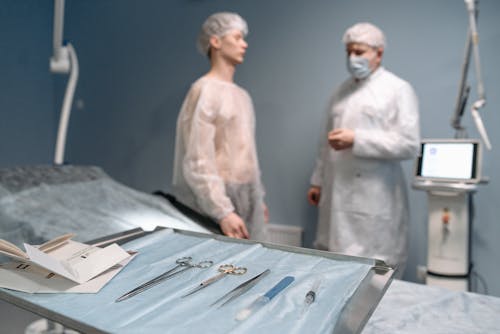Mastering the Art of Suturing: Tips and Techniques for Beginners

In the field of medicine, suturing is an essential skill that every aspiring healthcare professional should master. From emergency rooms to operating theaters, the art of suturing plays a pivotal role in wound closure and healing. As a beginner, learning to suture may seem daunting, but with the right guidance and practice, you can acquire the necessary skills to become proficient. In this blog post, we will explore some invaluable tips and techniques that will aid you on your journey to mastering the art of suturing.
Know Your Equipment
Before delving into suturing techniques, it’s crucial to familiarize yourself with the basic tools. The primary components include a suture needle, suture material (commonly nylon or silk), and forceps for grasping the needle. Understanding the different types of sutures and needles available will help you choose the most appropriate materials for specific situations. Remember to always use sterile equipment to reduce the risk of infection and promote healing.
Learn Different Suturing Techniques 
Various suturing techniques are employed depending on the wound type and location. The most common techniques include simple interrupted, continuous, vertical mattress, and horizontal mattress sutures. Each method has its unique advantages and applications. Start by mastering the simple interrupted suture, as it serves as the foundation for more advanced techniques.
Develop Good Hand-Eye Coordination
Suturing requires excellent hand-eye coordination. To improve this skill, consider practicing with suturing kits or even virtual simulators that are available online. These tools can help you gain confidence and dexterity before performing sutures on real patients. Remember, practice makes perfect, so devote time to honing your skills regularly.
Understand Tissue Handling
One of the critical aspects of suturing is knowing how to handle different types of tissues. Gentle manipulation is essential to minimize tissue trauma and promote optimal wound healing. Practice suturing on various materials that simulate real tissues, such as pig’s feet or synthetic models, to develop a sense of how tissues respond to suturing.
Practice Proper Knot Tying
An effective suture knot ensures that the wound remains closed during the healing process. Learn the basics of knot tying, including square knots and surgeon’s knots. Practice tying knots with consistent tension to prevent slippage or tissue strangulation. Additionally, make sure your knots lie flat and close to the skin surface to avoid pressure points.
Pay Attention to Wound Cleansing and Preparation
Before suturing, proper wound cleansing and preparation are crucial for infection prevention and optimal healing. Always clean the wound thoroughly with an antiseptic solution and ensure the wound edges are clean and free of debris. Avoid suturing contaminated wounds, as this can lead to severe infections.
Seek Guidance from Experienced Practitioners
If you have the opportunity, observe and learn from experienced healthcare professionals proficient in suturing. Their insights and tips can be invaluable as they share their real-life experiences and tricks they’ve learned over time.
Conclusion![]()
Mastering the art of suturing is an essential skill for any healthcare professional. With dedication, practice, and a focus on patient safety, you can become proficient in this crucial aspect of medicine. Remember to handle suturing equipment with care, practice various suturing techniques, develop good hand-eye coordination, and prioritize wound cleansing and preparation. Seek opportunities to learn from experienced practitioners and always prioritize patient comfort and safety. With time and effort, you’ll gain confidence and expertise in suturing, empowering you to contribute effectively to patient care and well-being. Happy suturing!
